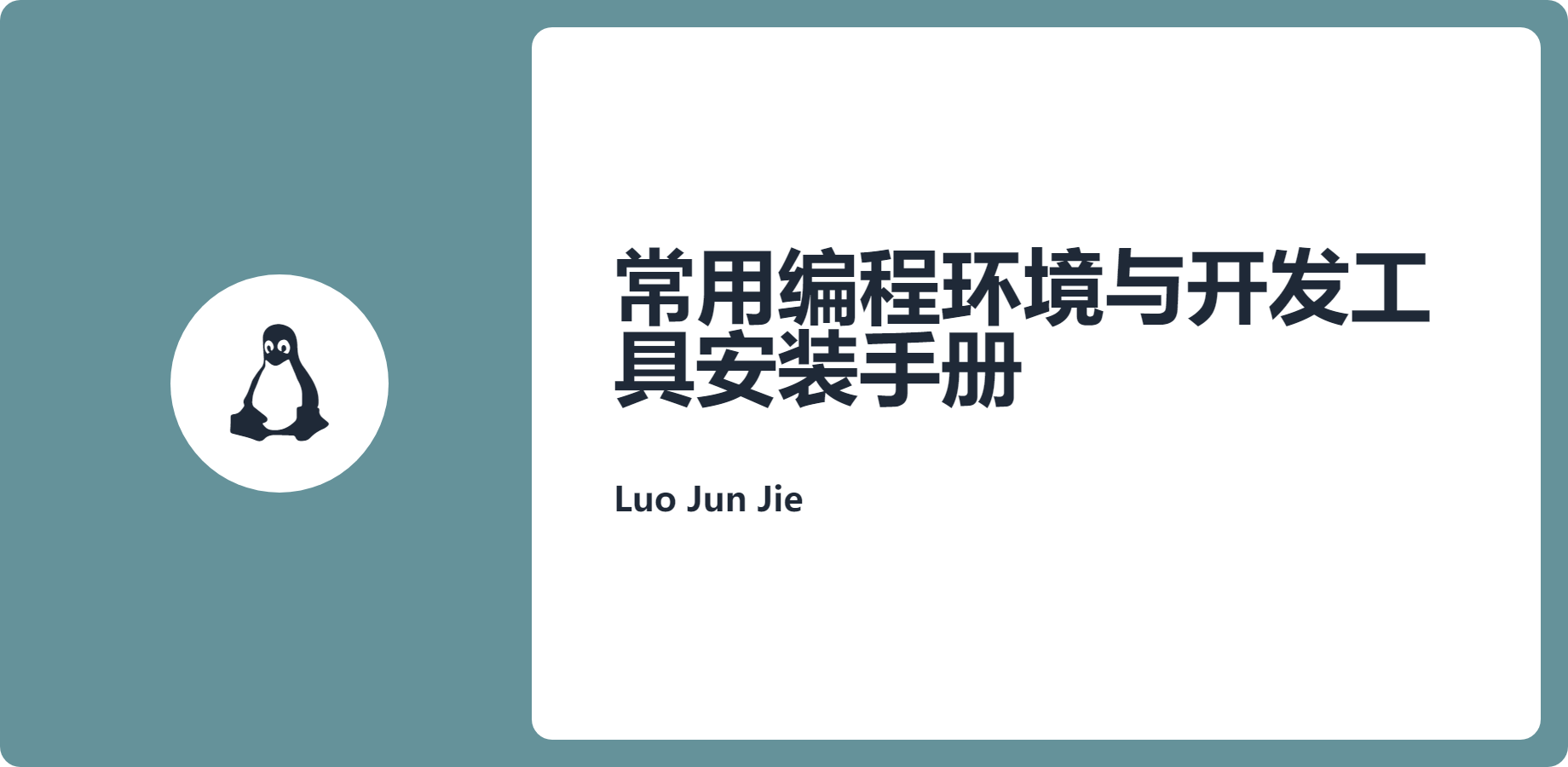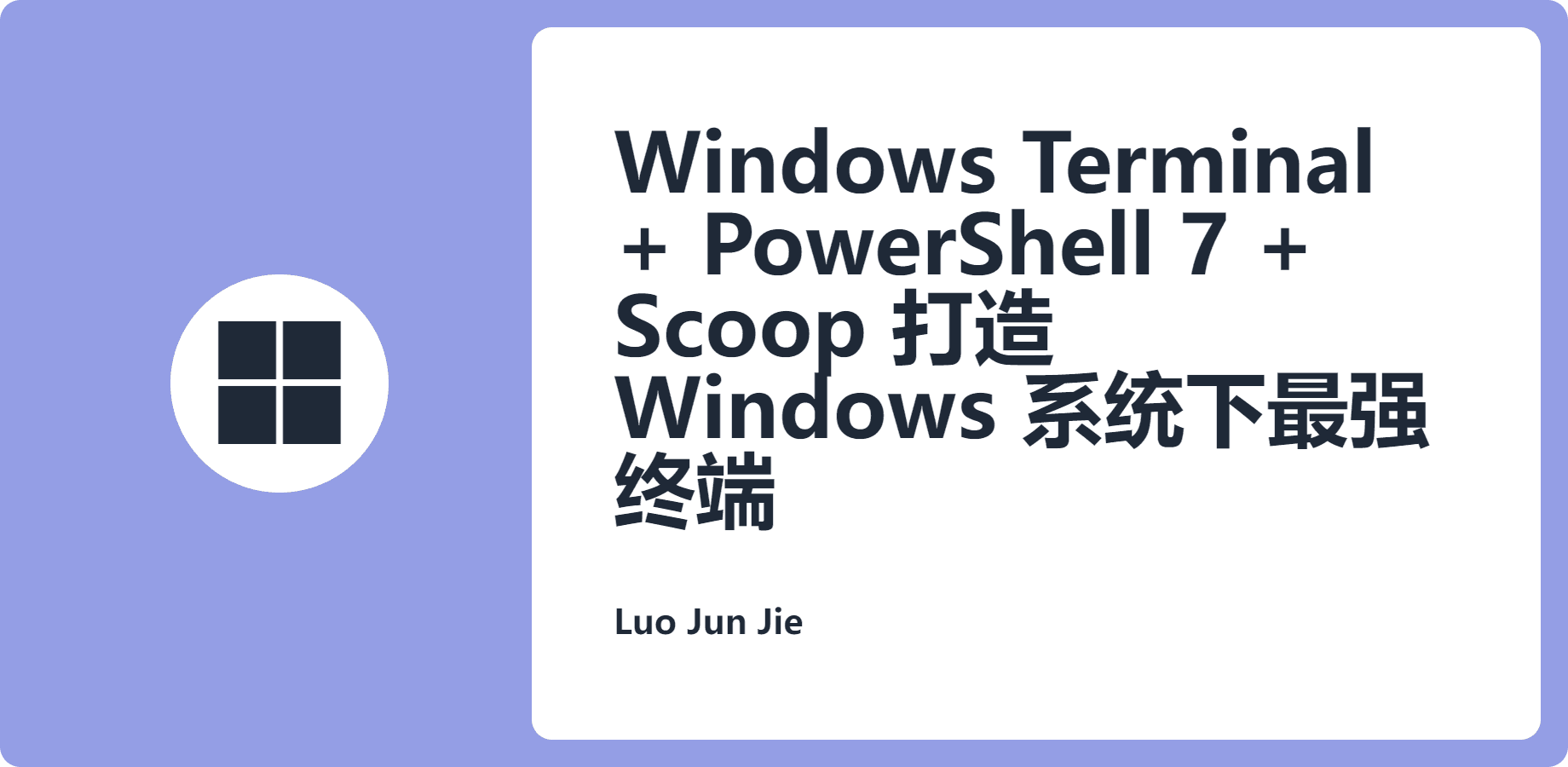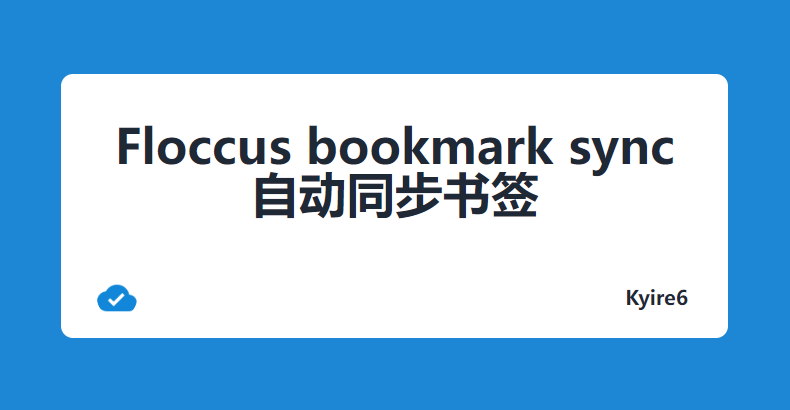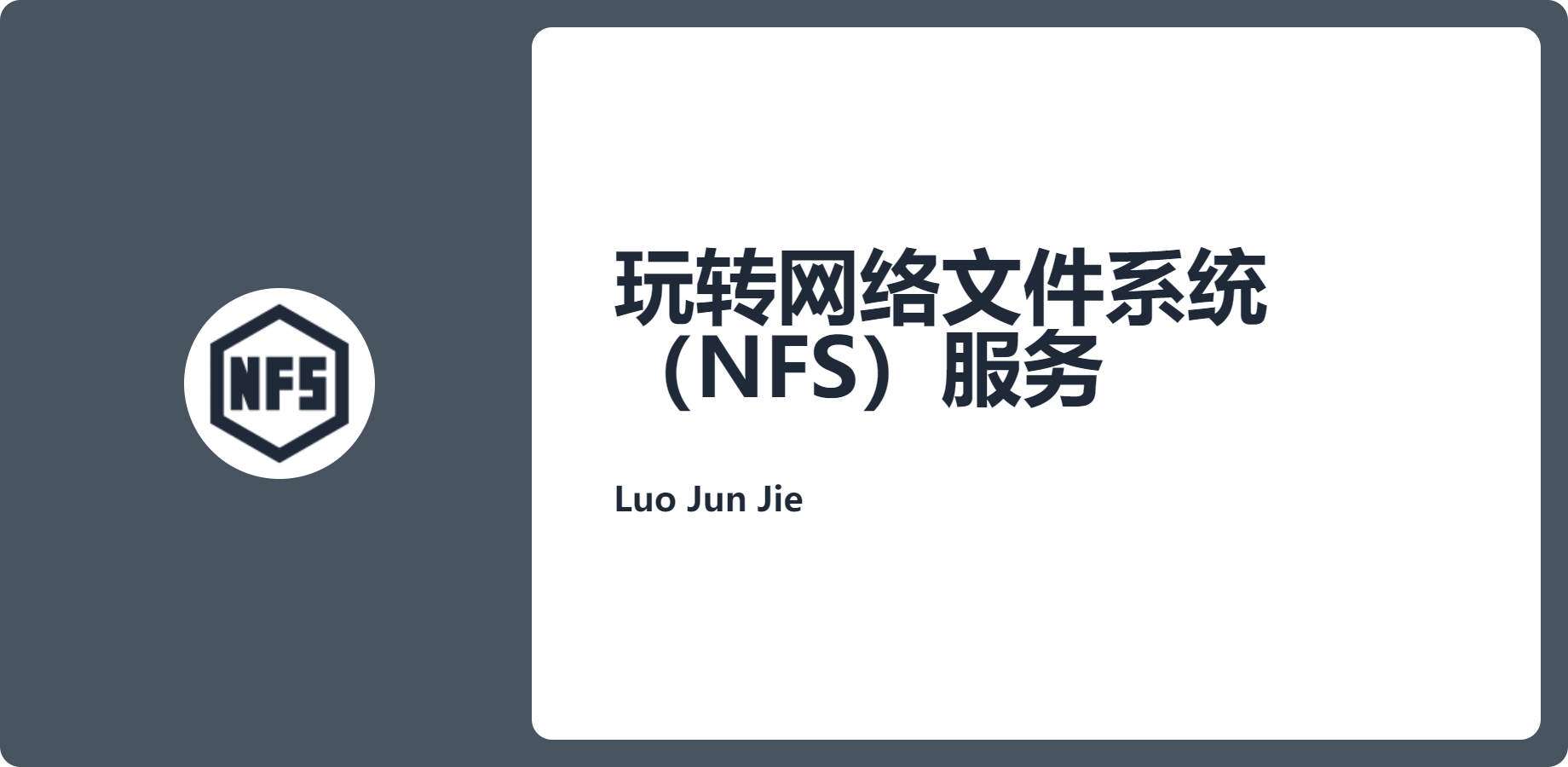什么是 JUC
JUC 是 java.util.concurrent 的简写。在 jdk 官方手册中可以看到 juc 相关的 jar 包有三个。
用中文概括一下,JUC 的意思就是 java 并发编程工具包
线程和进程
如果不能使用一句话说出来的技术,不扎实!
进程:一个程序,QQ.exe Music.exe 程序的集合
一个进程往往可以包含多个线程,至少包含一个!
Java 默认有几个线程? 2 个 main、GC
线程:线程是程序执行中一个单一的顺序控制流程
对于 Java 而言:Thread、Runnable、Callable
Java 真的可以开启线程吗? 开不了
1 2 3 4 5 6 7 8 9 10 11 12 13 14 15 16 17 18 19 20 21 22 23 24 25 26 27 28 29 30 31 32 33 public synchronized void start () { if (threadStatus != 0 ) throw new IllegalThreadStateException (); group.add(this ); boolean started = false ; try { start0(); started = true ; } finally { try { if (!started) { group.threadStartFailed(this ); } } catch (Throwable ignore) { } } } private native void start0 () ;
并发、并行 并发编程:并发、并行
并发(多线程操作同一个资源)
CPU 一核,模拟出来多条线程,天下武功,唯快不破,快速交替
并行(多个人一起行走)
1 2 3 4 5 6 7 8 9 10 11 12 13 14 package com.ouwen.demo01;public class Test { public static void main (String[] args) { System.out.println(Runtime.getRuntime().availableProcessors()); } }
并发编程的本质:充分利用 CPU 的资源
所有的公司都很看重!
线程有几个状态 1 2 3 4 5 6 7 8 9 10 11 12 13 14 15 16 17 18 19 public enum State { NEW, RUNNABLE, BLOCKED, WAITING, TIMED_WAITING, TERMINATED; }
wait/sleep 的区别
来自不同的类
wait => Object
sleep => Thread
关于锁的释放
wait 会释放锁,sleep 睡觉了,抱着锁睡觉,不会释放!
使用的范围是不同的
wait:只能在同步代码块中使用
sleep:可以在任何地方睡
Lock 锁(重点) 传统 synchronized 1 2 3 4 5 6 7 8 9 10 11 12 13 14 15 16 17 18 19 20 21 22 23 24 25 26 27 28 29 30 31 32 33 34 35 36 37 38 39 40 41 42 43 44 45 46 47 package com.ouwen.demo01;public class SaleTicketDemo01 { public static void main (String[] args) { Ticket ticket = new Ticket (); new Thread (() -> { for (int i = 1 ; i < 40 ; i++) { ticket.sale(); } }, "A" ).start(); new Thread (() -> { for (int i = 1 ; i < 40 ; i++) { ticket.sale(); } }, "B" ).start(); new Thread (() -> { for (int i = 1 ; i < 40 ; i++) { ticket.sale(); } }, "C" ).start(); } } class Ticket { private int number = 30 ; public synchronized void sale () { if (number > 0 ) { System.out.println(Thread.currentThread().getName() + "卖出了" + (number--) + "票,剩余:" + number); } } }
Lock 接口
公平锁:十分公平;可以先来后到
非公平锁:十分不公平;可以插队(默认)
1 2 3 4 5 6 7 8 9 10 11 12 13 14 15 16 17 18 19 20 21 22 23 24 25 26 27 28 29 30 31 32 33 34 35 36 37 38 39 40 41 42 43 44 45 46 47 48 49 50 51 52 53 54 55 56 57 58 59 60 61 62 63 64 package com.ouwen.demo01;import java.util.concurrent.locks.Lock;import java.util.concurrent.locks.ReentrantLock;public class SaleTicketDemo02 { public static void main (String[] args) { Ticket2 ticket = new Ticket2 (); new Thread (() -> { for (int i = 1 ; i < 40 ; i++) { ticket.sale(); } }, "A" ).start(); new Thread (() -> { for (int i = 1 ; i < 40 ; i++) { ticket.sale(); } }, "B" ).start(); new Thread (() -> { for (int i = 1 ; i < 40 ; i++) { ticket.sale(); } }, "C" ).start(); } } class Ticket2 { private int number = 30 ; Lock lock = new ReentrantLock (); public void sale () { lock.lock(); try { if (number > 0 ) { System.out.println(Thread.currentThread().getName() + "卖出了第" + (number--) + "票,剩余:" + number); } } catch (Exception e) { e.printStackTrace(); } finally { lock.unlock(); } } }
synchronized 和 Lock 区别
synchronize 内置的 Java 关键字,Lock 是一个 Java 类
synchronized 无法判断获取锁的状态,Lock 可以判断是否获取到了锁
synchronized 会自动释放锁,Lock 必须要手动释放锁!如果不释放锁,死锁
synchronized 线程 1(获得锁,阻塞)、线程 2(等待,傻傻的等);Lock 锁就不一定会等待下去;
synchronized 可重入锁,不可以中断的,非公平;Lock 可重入锁,可以判断锁,非公平(可以自己设置)
synchronized 适合锁少量的代码同步问题,Lock 适合锁大量的同步代码!
生产者和消费者问题 生产者和消费者问题 synchronized 版 1 2 3 4 5 6 7 8 9 10 11 12 13 14 15 16 17 18 19 20 21 22 23 24 25 26 27 28 29 30 31 32 33 34 35 36 37 38 39 40 41 42 43 44 45 46 47 48 49 50 51 52 53 54 55 56 57 58 59 60 61 62 63 64 65 66 67 68 package com.ouwen.pc;import com.sun.org.apache.bcel.internal.generic.NEW;public class A { public static void main (String[] args) { Data data = new Data (); new Thread (() -> { for (int i = 0 ; i < 10 ; i++) { try { data.increment(); } catch (InterruptedException e) { e.printStackTrace(); } } },"A" ).start(); new Thread (() -> { for (int i = 0 ; i < 10 ; i++) { try { data.decrement(); } catch (InterruptedException e) { e.printStackTrace(); } } },"B" ).start(); } } class Data { private int number = 0 ; public synchronized void increment () throws InterruptedException { if (number != 0 ) { this .wait(); } number++; System.out.println(Thread.currentThread().getName() + "=>" + number); this .notifyAll(); } public synchronized void decrement () throws InterruptedException { if (number == 0 ) { this .wait(); } number--; System.out.println(Thread.currentThread().getName() + "=>" + number); this .notifyAll(); } }
问题存在,A B C D 4 个线程 虚假唤醒
if 改为 while 判断
1 2 3 4 5 6 7 8 9 10 11 12 13 14 15 16 17 18 19 20 21 22 23 24 25 26 27 28 29 30 31 32 33 34 35 36 37 38 39 40 41 42 43 44 45 46 47 48 49 50 51 52 53 54 55 56 57 58 59 60 61 62 63 64 65 66 67 68 69 70 71 72 73 74 75 76 77 78 79 80 81 82 83 84 85 86 package com.ouwen.pc;import com.sun.org.apache.bcel.internal.generic.NEW;public class A { public static void main (String[] args) { Data data = new Data (); new Thread (() -> { for (int i = 0 ; i < 10 ; i++) { try { data.increment(); } catch (InterruptedException e) { e.printStackTrace(); } } },"A" ).start(); new Thread (() -> { for (int i = 0 ; i < 10 ; i++) { try { data.decrement(); } catch (InterruptedException e) { e.printStackTrace(); } } },"B" ).start(); new Thread (() -> { for (int i = 0 ; i < 10 ; i++) { try { data.increment(); } catch (InterruptedException e) { e.printStackTrace(); } } },"C" ).start(); new Thread (() -> { for (int i = 0 ; i < 10 ; i++) { try { data.decrement(); } catch (InterruptedException e) { e.printStackTrace(); } } },"D" ).start(); } } class Data { private int number = 0 ; public synchronized void increment () throws InterruptedException { while (number != 0 ) { this .wait(); } number++; System.out.println(Thread.currentThread().getName() + "=>" + number); this .notifyAll(); } public synchronized void decrement () throws InterruptedException { while (number == 0 ) { this .wait(); } number--; System.out.println(Thread.currentThread().getName() + "=>" + number); this .notifyAll(); } }
JUC 版的生产者与消费者问题
通过 Lock 找到 Condition
代码实现:
1 2 3 4 5 6 7 8 9 10 11 12 13 14 15 16 17 18 19 20 21 22 23 24 25 26 27 28 29 30 31 32 33 34 35 36 37 38 39 40 41 42 43 44 45 46 47 48 49 50 51 52 53 54 55 56 57 58 59 60 61 62 63 64 65 66 67 68 69 70 71 72 73 74 75 76 77 78 79 80 81 82 83 84 85 86 87 88 89 90 91 92 93 94 95 96 97 98 99 100 101 102 103 104 105 106 107 108 109 package com.ouwen.pc;import java.lang.reflect.Constructor;import java.util.concurrent.locks.Condition;import java.util.concurrent.locks.Lock;import java.util.concurrent.locks.ReentrantLock;public class B { public static void main (String[] args) { Data2 data = new Data2 (); new Thread (() -> { for (int i = 0 ; i < 10 ; i++) { try { data.increment(); } catch (InterruptedException e) { e.printStackTrace(); } } }, "A" ).start(); new Thread (() -> { for (int i = 0 ; i < 10 ; i++) { try { data.decrement(); } catch (InterruptedException e) { e.printStackTrace(); } } }, "B" ).start(); new Thread (() -> { for (int i = 0 ; i < 10 ; i++) { try { data.increment(); } catch (InterruptedException e) { e.printStackTrace(); } } }, "C" ).start(); new Thread (() -> { for (int i = 0 ; i < 10 ; i++) { try { data.decrement(); } catch (InterruptedException e) { e.printStackTrace(); } } }, "D" ).start(); } } class Data2 { private int number = 0 ; Lock lock = new ReentrantLock (); Condition condition = lock.newCondition(); public void increment () throws InterruptedException { lock.lock(); try { while (number != 0 ) { condition.await(); } number++; System.out.println(Thread.currentThread().getName() + "=>" + number); condition.signalAll(); } catch (Exception e) { e.printStackTrace(); } finally { lock.unlock(); } } public void decrement () throws InterruptedException { lock.lock(); try { while (number == 0 ) { condition.await(); } number--; System.out.println(Thread.currentThread().getName() + "=>" + number); condition.signalAll(); } catch (InterruptedException e) { e.printStackTrace(); } finally { lock.unlock(); } } }
任何一个新的技术诞生,绝不是仅仅只是覆盖了原来的技术,一定存在优势和补充!
Condition 精准的通知和唤醒线程 代码测试:
1 2 3 4 5 6 7 8 9 10 11 12 13 14 15 16 17 18 19 20 21 22 23 24 25 26 27 28 29 30 31 32 33 34 35 36 37 38 39 40 41 42 43 44 45 46 47 48 49 50 51 52 53 54 55 56 57 58 59 60 61 62 63 64 65 66 67 68 69 70 71 72 73 74 75 76 77 78 79 80 81 82 83 84 85 86 87 88 89 90 91 92 93 94 95 96 97 98 99 100 101 102 103 104 package com.ouwen.pc;import java.util.concurrent.locks.Condition;import java.util.concurrent.locks.Lock;import java.util.concurrent.locks.ReentrantLock;public class C { public static void main (String[] args) { Data3 data3 = new Data3 (); new Thread (() -> { for (int i = 0 ; i < 10 ; i++) { data3.printA(); } }, "A" ).start(); new Thread (() -> { for (int i = 0 ; i < 10 ; i++) { data3.printB(); } }, "B" ).start(); new Thread (() -> { for (int i = 0 ; i < 10 ; i++) { data3.printC(); } }, "C" ).start(); } } class Data3 { private Lock lock = new ReentrantLock (); Condition condition1 = lock.newCondition(); Condition condition2 = lock.newCondition(); Condition condition3 = lock.newCondition(); private int number = 1 ; public void printA () { lock.lock(); try { while (number != 1 ) { condition1.await(); } System.out.println(Thread.currentThread().getName() + "=>AAAAAAA" ); number = 2 ; condition2.signal(); } catch (Exception e) { e.printStackTrace(); } finally { lock.unlock(); } } public void printB () { lock.lock(); try { while (number != 2 ) { condition2.await(); } System.out.println(Thread.currentThread().getName() + "=>BBBBBB" ); number = 3 ; condition3.signal(); } catch (Exception e) { e.printStackTrace(); } finally { lock.unlock(); } } public void printC () { lock.lock(); try { while (number != 3 ) { condition3.await(); } System.out.println(Thread.currentThread().getName() + "=>CCCCCCCC" ); number = 1 ; condition1.signal(); } catch (Exception e) { e.printStackTrace(); } finally { lock.unlock(); } } }
8 锁现象 任何判断锁的是谁!永远的知道什么是锁,锁到底锁的是谁!
**深刻理解我们的锁 **
1 2 3 4 5 6 7 8 9 10 11 12 13 14 15 16 17 18 19 20 21 22 23 24 25 26 27 28 29 30 31 32 33 34 35 36 37 38 39 40 41 42 43 44 45 46 47 48 49 50 package com.ouwen.lock8;import java.util.concurrent.TimeUnit;public class Test1 { public static void main (String[] args) { Phone phone = new Phone (); new Thread (()->{ phone.sendSms(); }).start(); try { TimeUnit.SECONDS.sleep(1 ); } catch (InterruptedException e) { e.printStackTrace(); } new Thread (()->{ phone.call(); }).start(); } } class Phone { public synchronized void sendSms () { try { TimeUnit.SECONDS.sleep(4 ); } catch (InterruptedException e) { e.printStackTrace(); } System.out.println("发短信" ); } public synchronized void call () { System.out.println("打电话" ); } }
1 2 3 4 5 6 7 8 9 10 11 12 13 14 15 16 17 18 19 20 21 22 23 24 25 26 27 28 29 30 31 32 33 34 35 36 37 38 39 40 41 42 43 44 45 46 47 48 49 50 51 52 53 54 55 56 package com.ouwen.lock8;import java.util.concurrent.TimeUnit;public class Test2 { public static void main (String[] args) { Phone2 phone1 = new Phone2 (); Phone2 phone2 = new Phone2 (); new Thread (()->{ phone1.sendSms(); },"A" ).start(); try { TimeUnit.SECONDS.sleep(1 ); } catch (InterruptedException e) { e.printStackTrace(); } new Thread (()->{ phone2.call(); },"B" ).start(); } } class Phone2 { public synchronized void sendSms () { try { TimeUnit.SECONDS.sleep(4 ); } catch (InterruptedException e) { e.printStackTrace(); } System.out.println("发短信" ); } public synchronized void call () { System.out.println("打电话" ); } public void hello () { System.out.println("hello" ); } }
1 2 3 4 5 6 7 8 9 10 11 12 13 14 15 16 17 18 19 20 21 22 23 24 25 26 27 28 29 30 31 32 33 34 35 36 37 38 39 40 41 42 43 44 45 46 47 48 49 50 51 52 package com.ouwen.lock8;import java.util.concurrent.TimeUnit;public class Test3 { public static void main (String[] args) { Phone3 phone1 = new Phone3 (); Phone3 phone2 = new Phone3 (); new Thread (() -> { phone1.sendSms(); }, "A" ).start(); try { TimeUnit.SECONDS.sleep(1 ); } catch (InterruptedException e) { e.printStackTrace(); } new Thread (() -> { phone2.call(); }, "B" ).start(); } } class Phone3 { public static synchronized void sendSms () { try { TimeUnit.SECONDS.sleep(4 ); } catch (InterruptedException e) { e.printStackTrace(); } System.out.println("发短信" ); } public static synchronized void call () { System.out.println("打电话" ); } }
1 2 3 4 5 6 7 8 9 10 11 12 13 14 15 16 17 18 19 20 21 22 23 24 25 26 27 28 29 30 31 32 33 34 35 36 37 38 39 40 41 42 43 44 45 46 47 48 49 50 51 52 package com.ouwen.lock8;import java.util.concurrent.TimeUnit;public class Test4 { public static void main (String[] args) { Phone4 phone1 = new Phone4 (); Phone4 phone2 = new Phone4 (); new Thread (() -> { phone1.sendSms(); }, "A" ).start(); try { TimeUnit.SECONDS.sleep(1 ); } catch (InterruptedException e) { e.printStackTrace(); } new Thread (() -> { phone2.call(); }, "B" ).start(); } } class Phone4 { public static synchronized void sendSms () { try { TimeUnit.SECONDS.sleep(4 ); } catch (InterruptedException e) { e.printStackTrace(); } System.out.println("发短信" ); } public synchronized void call () { System.out.println("打电话" ); } }
小结
new this 具体的一个对象
static Class 唯一的模板
集合类不安全 List 不安全 1 2 3 4 5 6 7 8 9 10 11 12 13 14 15 16 17 18 19 20 21 22 23 24 25 26 27 28 29 30 31 32 33 34 package com.ouwen.unsafe;import java.util.*;import java.util.concurrent.CopyOnWriteArrayList;public class ListTest { public static void main (String[] args) { List<String> list = new CopyOnWriteArrayList <>(); for (int i = 0 ; i < 10 ; i++) { new Thread (() -> { list.add(UUID.randomUUID().toString().substring(0 , 5 )); System.out.println(list); }, String.valueOf(i)).start(); } } }
学习方法推荐:1、先会用、2、货比 3 家,寻找其他解决方案,3、分析源码!
Set 不安全 1 2 3 4 5 6 7 8 9 10 11 12 13 14 15 16 17 18 19 20 21 22 23 24 25 26 package com.ouwen.unsafe;import java.util.Collections;import java.util.HashSet;import java.util.Set;import java.util.UUID;import java.util.concurrent.CopyOnWriteArraySet;public class SetList { public static void main (String[] args) { Set<String> set = new CopyOnWriteArraySet <>(); for (int i = 0 ; i < 300 ; i++) { new Thread (() -> { set.add(UUID.randomUUID().toString().substring(0 , 5 )); System.out.println(set); }, String.valueOf(i)).start(); } } }
HashSet 底层是什么?
1 2 3 4 5 6 7 8 9 10 public HashSet () { map = new HashMap <>(); } public boolean add (E e) { return map.put(e, PRESENT)==null ; } private static final Object PRESENT = new Object ();
Map 不安全 1 2 3 4 5 6 7 8 9 10 11 12 13 14 15 16 17 18 19 20 21 22 23 24 25 26 27 28 29 package com.ouwen.unsafe;import java.util.Collections;import java.util.HashMap;import java.util.Map;import java.util.UUID;import java.util.concurrent.ConcurrentHashMap;public class MapTest { public static void main (String[] args) { Map<String,String> map = new ConcurrentHashMap <>(); for (int i = 0 ; i < 30 ; i++) { new Thread (()->{ map.put(Thread.currentThread().getName(), UUID.randomUUID().toString().substring(0 ,5 )); System.out.println(map); },String.valueOf(i)).start(); } } }
Callable(简单)
可以有返回值
可以抛出异常
方法不同 ,run()/call()
代码测试:
1 2 3 4 5 6 7 8 9 10 11 12 13 14 15 16 17 18 19 20 21 22 23 24 25 26 27 28 29 30 31 32 33 34 35 36 37 38 39 package com.ouwen.callable;import java.util.concurrent.Callable;import java.util.concurrent.ExecutionException;import java.util.concurrent.FutureTask;public class CallableTest { public static void main (String[] args) throws ExecutionException, InterruptedException { MyThread myThread = new MyThread (); FutureTask<String> task = new FutureTask <>(myThread); new Thread (task, "A" ).start(); new Thread (task, "B" ).start(); String s = task.get(); System.out.println(s); } } class MyThread implements Callable <String> { @Override public String call () throws Exception { System.out.println(Thread.currentThread().getName()+"call()" ); return "123" ; } }
细节:
有缓存
结果可能需要等待,会阻塞!
常用的辅助类 CountDownLatch
1 2 3 4 5 6 7 8 9 10 11 12 13 14 15 16 17 18 19 20 21 22 23 24 25 26 27 28 package com.ouwen.add;import java.util.concurrent.CountDownLatch;public class CountDownLatchDemo { public static void main (String[] args) throws InterruptedException { CountDownLatch countDownLatch = new CountDownLatch (6 ); for (int i = 0 ; i < 6 ; i++) { new Thread (()->{ System.out.println(Thread.currentThread().getName()+"Go Out" ); countDownLatch.countDown(); },String.valueOf(i)).start(); } countDownLatch.await(); System.out.println("关门" ); } }
原理:
==countDownLatch.countDown()== //数量-1
==countDownLatch.await()== //等待计数器归零,然后再向下执行
每次有线程调用 countDownLatch()数量-1,假设计数器变为 0,countDownLatch.await()就会被唤醒,继续往下执行
CyclicBarrier
加法计数器
1 2 3 4 5 6 7 8 9 10 11 12 13 14 15 16 17 18 19 20 21 22 23 24 25 26 27 28 29 30 31 32 33 34 35 36 package com.ouwen.add;import java.util.concurrent.BrokenBarrierException;import java.util.concurrent.CyclicBarrier;public class CycliBarrierDemo { public static void main (String[] args) { CyclicBarrier barrier = new CyclicBarrier (7 ,()->{ System.out.println("召唤神龙成功" ); }); for (int i = 0 ; i < 7 ; i++) { int temp = i; new Thread (()->{ System.out.println(Thread.currentThread().getName()+"收集" +temp+"个龙珠" ); try { barrier.await(); } catch (InterruptedException e) { e.printStackTrace(); } catch (BrokenBarrierException e) { e.printStackTrace(); } }).start(); } } }
Semaphore
1 2 3 4 5 6 7 8 9 10 11 12 13 14 15 16 17 18 19 20 21 22 23 24 25 26 27 28 29 30 31 32 33 package com.ouwen.add;import java.util.concurrent.Semaphore;import java.util.concurrent.TimeUnit;public class SemaphoreDemo { public static void main (String[] args) { Semaphore semaphore = new Semaphore (3 ); for (int i = 0 ; i < 6 ; i++) { new Thread (() -> { try { semaphore.acquire(); System.out.println(Thread.currentThread().getName() + "抢到车位" ); TimeUnit.SECONDS.sleep(2 ); System.out.println(Thread.currentThread().getName() + "离开车位" ); } catch (InterruptedException e) { e.printStackTrace(); } finally { semaphore.release(); } },String.valueOf(i)).start(); } } }
原理:
==semaphore.acquire();== // 获得,假设已经满了,等待,等待被释放为止!
==semaphore.release();== // 释放,会将当前的信号量释放+1,然后唤醒等待的线程!
作用:多个共享资源互斥的使用!并发限流,控制并发的线程数
读写锁 ReadWriteLock
1 2 3 4 5 6 7 8 9 10 11 12 13 14 15 16 17 18 19 20 21 22 23 24 25 26 27 28 29 30 31 32 33 34 35 36 37 38 39 40 41 42 43 44 45 46 47 48 49 50 51 52 53 54 55 56 57 58 59 60 61 62 63 64 65 66 67 68 69 70 71 72 73 74 75 76 77 78 79 80 81 82 83 84 85 86 87 88 89 90 91 92 93 94 95 96 97 package com.ouwen.rw;import java.util.HashMap;import java.util.Map;import java.util.concurrent.locks.Lock;import java.util.concurrent.locks.ReadWriteLock;import java.util.concurrent.locks.ReentrantReadWriteLock;public class ReadWriteLockDemo { public static void main (String[] args) { MyCacheLock myCache = new MyCacheLock (); for (int i = 0 ; i < 5 ; i++) { final int temp = i; new Thread (() -> { myCache.put(temp + "" , temp); }, String.valueOf(i)).start(); } for (int i = 0 ; i < 5 ; i++) { final int temp = i; new Thread (() -> { myCache.get(temp + "" ); }, String.valueOf(i)).start(); } } } class MyCache { private volatile Map<String, Object> map = new HashMap <>(); public void put (String key, Object value) { System.out.println(Thread.currentThread().getName() + "写入" + key); map.put(key, value); System.out.println(Thread.currentThread().getName() + "写入完毕" ); } public void get (String key) { System.out.println(Thread.currentThread().getName() + "读取" + key); Object o = map.get(key); System.out.println(Thread.currentThread().getName() + "读取完毕" ); } } class MyCacheLock { private volatile Map<String, Object> map = new HashMap <>(); private ReadWriteLock readWriteLock = new ReentrantReadWriteLock (); public void put (String key, Object value) { readWriteLock.writeLock().lock(); try { System.out.println(Thread.currentThread().getName() + "写入" + key); map.put(key, value); System.out.println(Thread.currentThread().getName() + "写入完毕" ); } catch (Exception e) { e.printStackTrace(); } finally { readWriteLock.writeLock().unlock(); } } public void get (String key) { readWriteLock.readLock().lock(); try { System.out.println(Thread.currentThread().getName() + "读取" + key); Object o = map.get(key); System.out.println(Thread.currentThread().getName() + "读取完毕" ); } catch (Exception e) { e.printStackTrace(); } finally { readWriteLock.readLock().unlock(); } } }
阻塞队列
阻塞队列
BlockingQueue 不是新的东西,属于 Collection 集合框架下
什么情况下我们会使用阻塞队列:多线程并发处理,线程池!
学会使用队列 添加、移除
四组 API
方式
有返回值,抛出异常
有返回值,不抛出异常
阻塞等待
超时等待
添加
add
offer()
put()
offer(,,)
移除
remove
foll()
take()
foll(,)
检测队首元素
element
peek
-
-
1 2 3 4 5 6 7 8 9 10 11 12 13 14 15 16 17 18 19 20 public static void test1 () { ArrayBlockingQueue blockingQueue = new ArrayBlockingQueue (3 ); System.out.println(blockingQueue.add("a" )); System.out.println(blockingQueue.add("b" )); System.out.println(blockingQueue.add("c" )); System.out.println("==========" ); System.out.println(blockingQueue.remove()); System.out.println(blockingQueue.remove()); System.out.println(blockingQueue.remove()); System.out.println(blockingQueue.remove()); }
1 2 3 4 5 6 7 8 9 10 11 12 13 14 15 16 17 18 public static void test2 () { ArrayBlockingQueue blockingQueue = new ArrayBlockingQueue (3 ); System.out.println(blockingQueue.offer("a" )); System.out.println(blockingQueue.offer("b" )); System.out.println(blockingQueue.offer("c" )); System.out.println("========" ); System.out.println(blockingQueue.poll()); System.out.println(blockingQueue.poll()); System.out.println(blockingQueue.poll()); System.out.println(blockingQueue.poll()); }
1 2 3 4 5 6 7 8 9 10 11 12 13 14 15 16 17 18 public static void test3 () throws InterruptedException { ArrayBlockingQueue<Object> blockingQueue = new ArrayBlockingQueue <>(3 ); blockingQueue.put("a" ); blockingQueue.put("b" ); blockingQueue.put("c" ); System.out.println("========" ); System.out.println(blockingQueue.take()); System.out.println(blockingQueue.take()); System.out.println(blockingQueue.take()); System.out.println(blockingQueue.take()); }
1 2 3 4 5 6 7 8 9 10 11 12 13 14 15 16 17 18 public static void test4 () throws InterruptedException { ArrayBlockingQueue<Object> blockingQueue = new ArrayBlockingQueue <>(3 ); System.out.println(blockingQueue.offer("a" )); System.out.println(blockingQueue.offer("b" )); System.out.println(blockingQueue.offer("c" )); System.out.println("=========" ); System.out.println(blockingQueue.poll()); System.out.println(blockingQueue.poll()); System.out.println(blockingQueue.poll()); System.out.println(blockingQueue.poll(2 ,TimeUnit.SECONDS)); }
SynchronousQueue 同步队列
进去一个元素,必须等待取出来之后,才能再往里面放一个元素!
put、take
1 2 3 4 5 6 7 8 9 10 11 12 13 14 15 16 17 18 19 20 21 22 23 24 25 26 27 28 29 30 31 32 33 34 35 36 37 38 39 40 41 42 43 44 45 46 package com.ouwen.bq;import java.util.concurrent.BlockingQueue;import java.util.concurrent.SynchronousQueue;import java.util.concurrent.TimeUnit;public class SynchronousQueueTest { public static void main (String[] args) { BlockingQueue<String> blockingQueue = new SynchronousQueue <>(); new Thread (()->{ try { System.out.println(Thread.currentThread().getName()+"put 1" ); blockingQueue.put("1" ); System.out.println(Thread.currentThread().getName()+"put 2" ); blockingQueue.put("2" ); System.out.println(Thread.currentThread().getName()+"put 3" ); blockingQueue.put("3" ); } catch (InterruptedException e) { e.printStackTrace(); } },"t1" ).start(); new Thread (()->{ try { TimeUnit.SECONDS.sleep(2 ); System.out.println(Thread.currentThread().getName()+blockingQueue.take()); TimeUnit.SECONDS.sleep(2 ); System.out.println(Thread.currentThread().getName()+blockingQueue.take()); TimeUnit.SECONDS.sleep(2 ); System.out.println(Thread.currentThread().getName()+blockingQueue.take()); } catch (InterruptedException e) { e.printStackTrace(); } },"t2" ).start(); } }
线程池(重点) 线程池:三大方法、七大参数、四种拒绝策略
池化技术 程序的运行,本质:占用系统的资源!优化资源的使用!=>池化技术
线程池、连接池、内存池、对象池….创建、销毁。十分浪费资源
池化技术:事先准备好一些资源,有人要用,就到我这里来拿,用完之后还给我。
线程池的好处
降低资源的消耗
提高响应的速度
方便管理
==线程复用,可以控制最大并发数、管理线程 ==
线程池:三大方法
1 2 3 4 5 6 7 8 9 10 11 12 13 14 15 16 17 18 19 20 21 22 23 24 25 26 27 28 29 30 package com.ouwen.pool;import java.util.concurrent.ExecutorService;import java.util.concurrent.Executors;public class Demo01 { public static void main (String[] args) { ExecutorService threadPool = Executors.newCachedThreadPool(); try { for (int i = 0 ; i < 10 ; i++) { threadPool.execute(()->{ System.out.println(Thread.currentThread().getName()); }); } } catch (Exception e) { e.printStackTrace(); } finally { threadPool.shutdown(); } } }
七大参数 源码分析:
1 2 3 4 5 6 7 8 9 10 11 12 13 14 15 16 17 18 19 20 21 22 23 24 25 26 27 28 29 30 31 32 33 34 35 36 37 38 39 40 41 public static ExecutorService newSingleThreadExecutor () { return new FinalizableDelegatedExecutorService (new ThreadPoolExecutor (1 , 1 , 0L , TimeUnit.MILLISECONDS, new LinkedBlockingQueue <Runnable>())); } public static ExecutorService newFixedThreadPool (int nThreads) { return new ThreadPoolExecutor (nThreads, nThreads, 0L , TimeUnit.MILLISECONDS, new LinkedBlockingQueue <Runnable>()); } public static ExecutorService newCachedThreadPool () { return new ThreadPoolExecutor (0 , Integer.MAX_VALUE, 60L , TimeUnit.SECONDS, new SynchronousQueue <Runnable>()); } public ThreadPoolExecutor (int corePoolSize, //核心线程池大小 int maximumPoolSize, //最大核心线程池大小 long keepAliveTime, //超时了没有人调用就会释放 TimeUnit unit, //超时单位 BlockingQueue<Runnable> workQueue, //阻塞队列 ThreadFactory threadFactory, //线程工厂,创建线程的,一般不用动 RejectedExecutionHandler handler //拒绝策略) { if (corePoolSize < 0 || maximumPoolSize <= 0 || maximumPoolSize < corePoolSize || keepAliveTime < 0 ) throw new IllegalArgumentException (); if (workQueue == null || threadFactory == null || handler == null ) throw new NullPointerException (); this .corePoolSize = corePoolSize; this .maximumPoolSize = maximumPoolSize; this .workQueue = workQueue; this .keepAliveTime = unit.toNanos(keepAliveTime); this .threadFactory = threadFactory; this .handler = handler; }
手动创建线程池 1 2 3 4 5 6 7 8 9 10 11 12 13 14 15 16 17 18 19 20 21 22 23 24 25 26 27 28 29 30 31 32 33 34 35 36 37 38 39 40 41 42 package com.ouwen.pool;import java.util.concurrent.*;public class Demo01 { public static void main (String[] args) { ExecutorService threadPool = new ThreadPoolExecutor (2 , 5 , 3 , TimeUnit.SECONDS, new LinkedBlockingDeque <>(3 ), Executors.defaultThreadFactory(), new ThreadPoolExecutor .DiscardOldestPolicy()); try { for (int i = 0 ; i < 9 ; i++) { threadPool.execute(()->{ System.out.println(Thread.currentThread().getName()); }); } } catch (Exception e) { e.printStackTrace(); } finally { threadPool.shutdown(); } } }
四种拒绝策略
小结和扩展 最大线程池大小如何去设置!
了解:IO 密集型,CPU 密集型:(调优)!
1 2 3 4 5 6 7 8 9 10 11 12 13 14 15 16 17 18 19 20 21 22 23 24 25 26 27 28 29 30 31 32 33 34 35 36 37 38 39 40 41 42 43 44 package com.ouwen.pool;import java.util.concurrent.*;public class Demo01 { public static void main (String[] args) { System.out.println(Runtime.getRuntime().availableProcessors()); ExecutorService threadPool = new ThreadPoolExecutor (2 , Runtime.getRuntime().availableProcessors(), 3 , TimeUnit.SECONDS, new LinkedBlockingDeque <>(3 ), Executors.defaultThreadFactory(), new ThreadPoolExecutor .DiscardOldestPolicy()); try { for (int i = 0 ; i < 9 ; i++) { threadPool.execute(()->{ System.out.println(Thread.currentThread().getName()); }); } } catch (Exception e) { e.printStackTrace(); } finally { threadPool.shutdown(); } } }
四大函数式接口(重点、必需掌握) 新时代的程序员:lambda 表达式、链式编程、函数式接口、Stream 流式计算
函数式接口:只有一个方法的接口 1 2 3 4 5 6 7 8 @FunctionalInterface public interface Runnable { public abstract void run () ; }
代码测试:
Function 接口 函数型接口
1 2 3 4 5 6 7 8 9 10 11 12 13 14 15 16 17 18 19 20 21 22 23 24 25 26 27 package com.ouwen.function;import java.util.function.Function;public class Demo01 { public static void main (String[] args) { Function<String, String> function = (str) -> {return str;}; System.out.println(function.apply("asd" )); } }
Predicate 接口 断定型接口
1 2 3 4 5 6 7 8 9 10 11 12 13 14 15 16 17 18 19 20 21 22 23 24 package com.ouwen.function;import java.util.function.Predicate;public class Demo02 { public static void main (String[] args) { Predicate<String> predicate = str -> str.isEmpty(); System.out.println(predicate.test("" )); } }
Consumer 接口 消费型接口
1 2 3 4 5 6 7 8 9 10 11 12 13 14 15 16 17 18 19 20 21 22 23 24 25 26 package com.ouwen.function;import com.sun.org.apache.bcel.internal.generic.NEW;import java.util.function.Consumer;public class Demo03 { public static void main (String[] args) { Consumer<String> consumer = str -> System.out.println(str); consumer.accept("asd" ); } }
Supplier 接口 供给型接口
1 2 3 4 5 6 7 8 9 10 11 12 13 14 15 16 17 18 19 20 21 22 23 package com.ouwen.function;import java.util.function.Supplier;public class Demo04 { public static void main (String[] args) { Supplier<Integer> supplier = () -> 1024 ; System.out.println(supplier.get()); } }
Stream 流式计算 什么是流式计算? 大数据时代:存储+计算
集合是用来存储东西的
计算都应该交给流来操作!
1 2 3 4 5 6 7 8 9 10 11 12 13 14 15 16 17 18 19 20 21 22 23 24 25 26 27 28 29 30 31 32 33 34 35 36 37 38 39 package com.ouwen.stream;import java.util.Arrays;import java.util.Comparator;import java.util.List;import java.util.function.Function;public class Test { public static void main (String[] args) { User u1 = new User (1 , "a" , 21 ); User u2 = new User (2 , "b" , 22 ); User u3 = new User (3 , "c" , 23 ); User u4 = new User (4 , "d" , 24 ); User u5 = new User (6 , "e" , 26 ); List<User> users = Arrays.asList(u1, u2, u3, u4, u5); users.stream() .filter(u -> u.getId() % 2 == 0 ) .filter(u -> u.getAge() > 23 ) .peek(user -> user.setName(user.getName().toUpperCase())) .sorted(Comparator.comparing(User::getName, Comparator.reverseOrder())) .limit(1 ) .forEach(System.out::println); } }
ForkJoin 分支合并
什么是 ForkJoin? ForkJoin 在 JDK1.7,并行执行任务!提高效率,大数据量!
ForkJoin 特点:工作窃取
这个里面维护的都是双端队列
如何使用 ForkJoin? 异步回调 Future 设计的初衷:对将来的某个事件的结果进行建模
1 2 3 4 5 6 7 8 9 10 11 12 13 14 15 16 17 18 19 20 21 22 23 24 25 26 27 28 29 30 31 32 33 34 35 36 37 38 39 40 41 42 43 44 45 46 47 package com.ouwen.future;import java.util.concurrent.CompletableFuture;import java.util.concurrent.ExecutionException;import java.util.concurrent.TimeUnit;public class Demo01 { public static void main (String[] args) throws ExecutionException, InterruptedException { CompletableFuture<Integer> completableFuture = CompletableFuture.supplyAsync(() -> { System.out.println(Thread.currentThread().getName() + "runAsync=>Integer" ); int i = 10 /0 ; return 1024 ; }); completableFuture.whenComplete((t,u)->{ System.out.println(t); System.out.println(u); }).exceptionally((e)->{ System.out.println(e.getMessage()); return 233 ; }); } }
JMM 请你谈谈你对 Volatile 的理解 Volatile 是 Java 虚拟机提供的轻量级的同步机制
保证可见性
不保证原子性
禁止指令重排
什么是 JMM JMM:java 内存模型,不存在的东西,概念!约定!
关于 JMM 一些同步的约定:
线程解锁前,必须把共享变量立刻刷回主内存
线程加锁前,必须读取主内存中的最新值到工作内存中!
加锁和解锁必须是同一把锁!
线程 工作内存、主内存
8 种操作
内存交互操作有 8 种,虚拟机实现必须保证每一个操作都是原子的,不可在分的(对于 double 和 long 类型的变量来说,load、store、read 和 write 操作在某些平台上允许例外)
lock (锁定):作用于主内存的变量,把一个变量标识为线程独占状态
unlock (解锁):作用于主内存的变量,它把一个处于锁定状态的变量释放出来,释放后的变量才可以被其他线程锁定
read (读取):作用于主内存变量,它把一个变量的值从主内存传输到线程的工作内存中,以便随后的 load 动作使用
load (载入):作用于工作内存的变量,它把 read 操作从主存中变量放入工作内存中
use (使用):作用于工作内存中的变量,它把工作内存中的变量传输给执行引擎,每当虚拟机遇到一个需要使用到变量的值,就会使用到这个指令
assign (赋值):作用于工作内存中的变量,它把一个从执行引擎中接受到的值放入工作内存的变量副本中
store (存储):作用于主内存中的变量,它把一个从工作内存中一个变量的值传送到主内存中,以便后续的 write 使用
write (写入):作用于主内存中的变量,它把 store 操作从工作内存中得到的变量的值放入主内存的变量中
JMM 对这八种指令的使用,制定了如下规则:
不允许 read 和 load、store 和 write 操作之一单独出现。即使用了 read 必须 load,使用了 store 必须 write
不允许线程丢弃他最近的 assign 操作,即工作变量的数据改变了之后,必须告知主存
不允许一个线程将没有 assign 的数据从工作内存同步回主内存
一个新的变量必须在主内存中诞生,不允许工作内存直接使用一个未被初始化的变量。就是怼变量实施 use、store 操作之前,必须经过 assign 和 load 操作
一个变量同一时间只有一个线程能对其进行 lock。多次 lock 后,必须执行相同次数的 unlock 才能解锁
如果对一个变量进行 lock 操作,会清空所有工作内存中此变量的值,在执行引擎使用这个变量前,必须重新 load 或 assign 操作初始化变量的值
如果一个变量没有被 lock,就不能对其进行 unlock 操作。也不能 unlock 一个被其他线程锁住的变量
对一个变量进行 unlock 操作之前,必须把此变量同步回主内存
问题:程序不知道主内存的值被修改过了!!
1 2 3 4 5 6 7 8 9 10 11 12 13 14 15 16 17 18 19 20 21 22 23 24 package com.ouwen.volatile1;import java.util.concurrent.TimeUnit;public class JMMDemo { private static int num = 0 ; public static void main (String[] args) throws InterruptedException { new Thread (()->{ while (num == 0 ){ } }).start(); TimeUnit.SECONDS.sleep(1 ); num = 1 ; System.out.println(num); } }
Volatile 保证可见性 1 2 3 4 5 6 7 8 9 10 11 12 13 14 15 16 17 18 19 20 21 22 23 24 25 26 27 package com.ouwen.volatile1;import java.util.concurrent.TimeUnit;public class JMMDemo { private volatile static int num = 0 ; public static void main (String[] args) throws InterruptedException { new Thread (()->{ while (num == 0 ){ } }).start(); TimeUnit.SECONDS.sleep(1 ); num = 1 ; System.out.println(num); } }
不保证原子性 原子性:不可分割
线程 A 在执行任务的时候,不能被打扰的,也不能被分割,要么同时成功,要么同时失败!
1 2 3 4 5 6 7 8 9 10 11 12 13 14 15 16 17 18 19 20 21 22 23 24 25 26 27 28 29 30 31 32 package com.ouwen.volatile1;public class Demo2 { private volatile static int num = 0 ; public static void add () { num++; } public static void main (String[] args) { for (int i = 0 ; i < 20 ; i++) { new Thread (() -> { for (int i1 = 0 ; i1 < 1000 ; i1++) { add(); } }).start(); } while (Thread.activeCount() > 2 ) { Thread.yield(); } System.out.println(Thread.currentThread().getName() + "==>" + num); } }
如果不加 lock 和 synchronized,怎样保持原子性
使用原子类,解决原子性问题
1 2 3 4 5 6 7 8 9 10 11 12 13 14 15 16 17 18 19 20 21 22 23 24 25 26 27 28 29 30 31 32 33 34 35 36 package com.ouwen.volatile1;import java.util.concurrent.atomic.AtomicInteger;public class Demo2 { private volatile static AtomicInteger num = new AtomicInteger (); public static void add () { num.getAndIncrement(); } public static void main (String[] args) { for (int i = 0 ; i < 20 ; i++) { new Thread (() -> { for (int i1 = 0 ; i1 < 1000 ; i1++) { add(); } }).start(); } while (Thread.activeCount() > 2 ) { Thread.yield(); } System.out.println(Thread.currentThread().getName() + "==>" + num); } }
这些类的底层都直接和操作系统挂钩!!直接在内存中修改只!Usafe 类是一个很特殊的存在!
指令重排 什么是指令重排:你写的程序,计算机并不是按照你写的那样去执行的
源代码 –> 编译器优化的重排 –> 指令并行也可能会重排 –> 内存也可能会重排 –>执行
==处理器在进行指令重排的时候,考虑:数据之间的依赖性! ==
可能造成影响的结果:a b x y 四个数都是 0
线程 A
线程 B
x=a
y=b
b=1
a=2
正常的结果:x=0 y=0 但是可能由于指令重排
线程 A
线程 B
b=1
a=2
x=a
y=b
指令重排导致的诡异结果:x=2 y=1
volatile 可以避免指令重排:
内存屏障。CPU 指令。
作用:
1、保证特定的操作的执行顺序!
2、可以保证某些变量的内存可见性 (利用这些特性 volatile 实现了可见性)
Volatile 是可以保持可见性,不能保证原子性,因为内存屏障,可以保证避免指令重排的现象产生!
深入理解 CAS 什么是 CAS? 1 2 3 4 5 6 7 8 9 10 11 12 13 14 15 16 17 18 19 20 21 22 23 24 package com.ouwen.cas;import java.util.concurrent.atomic.AtomicInteger;public class CASDemo { public static void main (String[] args) { AtomicInteger atomicInteger = new AtomicInteger (2020 ); System.out.println(atomicInteger.compareAndSet(2020 , 2021 )); System.out.println(atomicInteger.get()); System.out.println(atomicInteger.compareAndSet(2020 , 2021 )); System.out.println(atomicInteger.get()); } }
Unsafe 类 CAS : 比较当前工作内存中的值和主内存中的值,如果这个值是期望的,那么则执行操作!如果不是就 一直循环!
缺点:
1、 循环会耗时
2、一次性只能保证一个共享变量的原子性
3、ABA 问题
ABA 问题(狸猫换太子)
1 2 3 4 5 6 7 8 9 10 11 12 13 14 15 16 17 18 19 20 21 22 23 24 25 26 27 28 29 30 package com.ouwen.cas;import java.util.concurrent.atomic.AtomicInteger;public class CASDemo { public static void main (String[] args) { AtomicInteger atomicInteger = new AtomicInteger (2020 ); System.out.println(atomicInteger.compareAndSet(2020 , 2021 )); System.out.println(atomicInteger.get()); System.out.println(atomicInteger.compareAndSet(2021 , 2020 )); System.out.println(atomicInteger.get()); System.out.println(atomicInteger.compareAndSet(2020 , 6666 )); System.out.println(atomicInteger.get()); } }
原子引用 解决 ABA 问题,引入原子引用!对应的思想就是我们的乐观锁
带版本号的原子操作!
1 2 3 4 5 6 7 8 9 10 11 12 13 14 15 16 17 18 19 20 21 22 23 24 25 26 27 28 29 30 31 32 33 34 35 36 37 38 39 40 41 42 43 44 45 46 47 48 49 50 51 52 53 package com.ouwen.cas;import java.util.concurrent.TimeUnit;import java.util.concurrent.atomic.AtomicInteger;import java.util.concurrent.atomic.AtomicReference;import java.util.concurrent.atomic.AtomicStampedReference;import java.util.zip.DeflaterOutputStream;public class CASDemo02 { public static void main (String[] args) { AtomicStampedReference<Integer> integer = new AtomicStampedReference <>(1 , 1 ); new Thread (() -> { int stamp = integer.getStamp(); System.out.println("a1=>" +stamp); try { TimeUnit.SECONDS.sleep(1 ); } catch (InterruptedException e) { e.printStackTrace(); } System.out.println(integer.compareAndSet(1 , 2 , integer.getStamp(), integer.getStamp() + 1 )); System.out.println("a2=>" +integer.getStamp()); System.out.println(integer.compareAndSet(2 , 1 , integer.getStamp(), integer.getStamp() + 1 )); System.out.println("a3=>" +integer.getStamp()); }, "a" ).start(); new Thread (() -> { int stamp = integer.getStamp(); System.out.println("b1=>" +stamp); try { TimeUnit.SECONDS.sleep(2 ); } catch (InterruptedException e) { e.printStackTrace(); } System.out.println(integer.compareAndSet(1 , 6 , stamp, stamp + 1 )); System.out.println("b2=>" +integer.getStamp()); }, "b" ).start(); } }
注意:
Integer 使用了对象缓存机制,默认范围是 -128 ~ 127 ,推荐使用静态工厂方法 valueOf 获取对象实 例,而不是 new,因为 valueOf 使用缓存,而 new 一定会创建新的对象分配新的内存空间;
各种锁的理解 公平锁、非公平锁 公平锁:非常公平,不能够插队,必须先来后到!
非公平锁:非常不公平,可以插队(默认都是非公平)
1 2 3 4 5 6 7 public ReentrantLock () { sync = new NonfairSync (); } public ReentrantLock (boolean fair) { sync = fair ? new FairSync () : new NonfairSync (); }
可重入锁(递归锁)
synchronized 版
1 2 3 4 5 6 7 8 9 10 11 12 13 14 15 16 17 18 19 20 21 22 23 24 25 26 27 28 29 30 31 package com.ouwen.lock;public class Demo01 { public static void main (String[] args) { Phone phone = new Phone (); new Thread (()->{ phone.sms(); },"A" ).start(); new Thread (()->{ phone.sms(); },"B" ).start(); } } class Phone { public synchronized void sms () { System.out.println(Thread.currentThread().getName() + "sms" ); call(); } public synchronized void call () { System.out.println(Thread.currentThread().getName() + "call" ); } }
Lock 版
1 2 3 4 5 6 7 8 9 10 11 12 13 14 15 16 17 18 19 20 21 22 23 24 25 26 27 28 29 30 31 32 33 34 35 36 37 38 39 40 41 42 43 44 45 46 47 48 49 50 51 52 package com.ouwen.lock;import java.util.concurrent.locks.Lock;import java.util.concurrent.locks.ReentrantLock;public class Demo02 { public static void main (String[] args) { Phone2 phone = new Phone2 (); new Thread (() -> { phone.sms(); }, "A" ).start(); new Thread (() -> { phone.sms(); }, "B" ).start(); } } class Phone2 { Lock lock = new ReentrantLock (); public void sms () { lock.lock(); lock.lock(); try { System.out.println(Thread.currentThread().getName() + "sms" ); call(); } catch (Exception e) { e.printStackTrace(); } finally { lock.unlock(); lock.unlock(); } } public synchronized void call () { lock.lock(); try { System.out.println(Thread.currentThread().getName() + "call" ); } catch (Exception e) { e.printStackTrace(); } finally { lock.unlock(); } } }
自选锁 spinlock
自定义锁:
1 2 3 4 5 6 7 8 9 10 11 12 13 14 15 16 17 18 19 20 21 22 23 24 25 26 27 28 29 30 31 32 package com.ouwen.lock;import java.util.concurrent.atomic.AtomicReference;public class SpinlockDemo { AtomicReference<Thread> atomicReference = new AtomicReference <>(); public void mylock () { Thread thread = Thread.currentThread(); System.out.println(thread.getName() + "==>mylock" ); while (!atomicReference.compareAndSet(null , thread)) { } } public void myunlock () { Thread thread = Thread.currentThread(); System.out.println(thread.getName() + "==>myunlock" ); atomicReference.compareAndSet(thread, null ); } }
测试代码:
1 2 3 4 5 6 7 8 9 10 11 12 13 14 15 16 17 18 19 20 21 22 23 24 25 26 27 28 29 30 31 32 33 34 35 36 37 38 39 40 41 42 43 44 45 46 47 package com.ouwen.lock;import java.util.concurrent.TimeUnit;import java.util.concurrent.locks.ReentrantLock;public class TestSpinLock { public static void main (String[] args) throws InterruptedException { SpinlockDemo lock = new SpinlockDemo (); new Thread (()->{ lock.mylock(); try { TimeUnit.SECONDS.sleep(5 ); } catch (Exception e) { e.printStackTrace(); } finally { lock.myunlock(); } },"T1" ).start(); TimeUnit.SECONDS.sleep(1 ); new Thread (()->{ lock.mylock(); try { TimeUnit.SECONDS.sleep(5 ); } catch (Exception e) { e.printStackTrace(); } finally { lock.myunlock(); } },"T2" ).start(); } }
死锁 死锁是什么?
如何解决死锁问题? 1、使用jps -l定位进程号
2、使用jstack 进程号 找到死锁问题
查看堆栈信息,找到死锁问题!























































